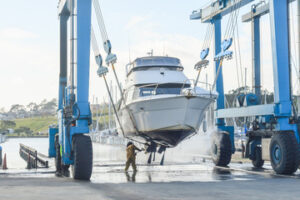Exterminator Bakersfield is someone who eliminates pests from homes or businesses. They can help with a variety of issues, including identifying the types of pests and implementing treatment plans.

They may also advise on sanitation practices, structural repairs, and habitat modifications to prevent future infestations. Exterminators are often self-employed.
An exterminator’s job requires them to inspect homes and businesses for pests. These inspections can take between 30 minutes and an hour, depending on the size of the structure and what is being looked for. When performing an inspection, the exterminator will be looking for both visible signs of infestation as well as conducive conditions that could allow for future infestations.
During the inspection, an exterminator will also check the overall condition of the structure to see if there is any damage that needs to be addressed. They will also look for potential entry points into a home or business. Depending on the type of infestation, an exterminator may use tools such as a thermal imaging camera, moisture meter or probe to further evaluate the situation.
As part of the inspection, an exterminator will also listen to their customer. Customers know their homes or businesses better than anyone, and hearing their concerns can help the exterminator find the best treatment plan for the situation. For example, if a customer has seen cockroach droppings in their pantry, listening to their concerns will help the exterminator determine whether those droppings are from fleas or roaches and offer the proper treatment.
After the inspection, the exterminator will create a customized treatment plan for the home or business. This will include how to exclude possible points of entry, eliminate conducive conditions and a pest control management plan for ongoing protection from infestations. An exterminator will then communicate this to the customer, going into as much or as little detail as the customer desires.
Outside of residential settings, an exterminator will be responsible for managing pests in commercial and agricultural settings. They will work with farmers and other agricultural professionals to manage pest populations in crops, orchards and vineyards while ensuring that the health and safety of humans and animals are not compromised. They will also use specialized equipment and techniques to minimize impacts on non-target organisms and the ecosystem as they manage pest infestations in outdoor environments.
As pests such as termites, rodents and ants continue to cause significant damage to structures across the country, many homeowners are turning to professional exterminators for help. But with so many different options available, it’s important for consumers to understand what an exterminator does exactly before hiring one to treat their home or business.
Treatments
Using a variety of techniques, including chemical sprays and bait traps, to control pest populations, exterminators implement treatment plans. These plans may also include sanitation practices and structural repairs that minimize pest attractants and entry points. They may also recommend longer-term prevention methods such as landscaping changes, which can discourage pests from entering buildings.
Pest infestations can be unpleasant and dangerous. Some pests carry disease-causing germs, such as mosquitoes that can spread encephalitis, Zika virus, dengue fever, and malaria, and fleas that can spread typhus, plague, and Lyme disease. Other pests cause damage to buildings or structures, such as termites that cause extensive and costly wood damage.
Some pests can be difficult or even impossible to eradicate without professional intervention. Exterminators are trained to identify the most effective solutions for different types of pests, and they are skilled at developing and applying integrated approaches that maximize the efficacy of treatments. This can help reduce the amount of chemicals used and improve the overall safety of a property.
A qualified exterminator will always consider the environment and health of people, pets, and other animals when applying pest control treatments. They follow strict safety protocols and adhere to all applicable regulatory requirements when handling and applying pesticides. They also educate clients on preventive measures that they can take to mitigate the risk of future infestations, such as cleaning and storing food properly, sealing entry points, and conducting regular home maintenance.
While it may be tempting to try DIY methods of pest control, these rarely work and can be extremely dangerous for your family, pets, and other animals. Additionally, they often contain harsh chemicals that are harmful to humans and other animals and can contaminate the surrounding environment. Exterminators are specially trained to safely and effectively use pesticides, reducing the risks of toxic exposure.
Depending on the type of pests being treated, an exterminator may require you to leave the premises for a few hours or days. If they are using fumigants or other highly toxic chemicals, you may need to vacate the property for longer periods of time. Be sure to ask your exterminator about these instructions before they start the treatment process. They should also tell you if it’s safe to resume normal household activities, such as washing the dishes or mopping the floors, after the treatment is complete.
Prevention
Everyone wants a comfortable home and productive workplace, but pests can interfere with those goals. Whether it’s ants marching across the kitchen counter or mice scurrying through the office, these pests can disrupt our daily lives by posing health and safety risks. That’s where an exterminator comes in. They are skilled at pest control, preventing infestations, and helping homeowners and business owners get their space back.
One of the first things an exterminator does is perform a thorough inspection of the property. This helps them identify the location and scope of a pest infestation. It also allows them to determine the most effective treatment methods. They can use a variety of pest control treatments, including chemical sprays, bait traps, heat treatments, and fumigation.
Another key skill an exterminator has is the ability to listen to their customers. They ask questions and then carefully consider the answers to better understand the situation. This allows them to provide more targeted solutions that address the root of the problem, rather than simply treating the symptoms. It also ensures that the customer is satisfied with the results.
Finally, exterminators are highly trained in using personal protective equipment (PPE). This includes gloves, safety goggles, respirators, and coveralls. This PPE is essential for exterminators, as it protects them from exposure to hazardous chemicals and pesticides. It also helps them to safely remove pests from properties without causing harm to humans or pets.
While many pests are a nuisance, some carry dangerous diseases that can be harmful to humans and pets. Mosquitoes, for example, can spread encephalitis, Zika virus, dengue fever, and chikungunya disease. Fleas can spread typhus, ringworm, and flea tapeworm. And, ticks can spread Lyme disease, Rocky Mountain spotted fever, and other maladies. A skilled exterminator can help reduce the risk of pests invading homes and businesses by implementing long-term prevention techniques, such as sealing cracks, trimming vegetation, using screens, and storing food properly. This can also help prevent the need for costly pesticide treatments. As pest control specialists, they can also offer follow-up services to ensure that the pests don’t return.
Follow-up
While the term exterminator seems to have an aggressive connotation, their job is not always destructive. In fact, many times they help prevent pests from entering a home by sealing the entry points and implementing other prevention strategies. This might include removing rotting fruit or other food sources that attract pests, setting traps, and spraying. They also use chemicals to kill and repel unwanted pests.
If you need to hire an exterminator, make sure you do your homework first. Find out how long they’ve been in business and read reviews from past clients. This can give you a good idea of the type of service that they offer and whether they are reputable. It is also important to ask the exterminator about any health issues you or your family may have so they can recommend treatment methods that are safe for all occupants of the property.
Before the pest extermination process begins, it is a good idea to give your house a deep clean. Pick up food that has fallen on the floor, do the dishes, and take out the trash. This will make it easier for the exterminator to reach the spots in your home where pests are hiding. It is also helpful to tell the exterminator about any areas in your home where pests are frequently seen so they can focus on these areas during treatment.
After the pest extermination process is completed, it is essential to stay away from the house until the exterminator tells you that it is safe to re enter. This is because they often work with noxious chemicals that can be harmful to humans and pets.
It is also a good idea to clean the entire area where the infestation and treatment took place. Wipe down items like wall hangings, doorknobs, and furniture pieces to avoid transmission of chemical pathogens. It is also a good idea to ask the exterminator if they offer deep cleaning services or can recommend someone who does. This will ensure that all areas are clear of traces of the toxins used in the process and decrease the likelihood of pests reappearing inside your home.


